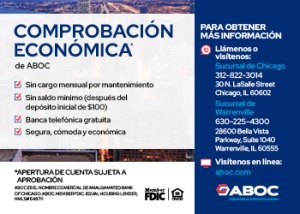By: Daniel Nardini
 These days most Americans are concerned, if they are concerned about anything “radical,” is about Al Qaeda and what has been defined as “radical Islam.” But long before what is being called radical Islam, there was and still is another radical guerrilla movement still very much alive and kicking—the Maoist international movement. The Maoist international movement follows the teachings and writings of long deceased Chinese premier and revolutionary Mao Zedong (1893-1976).
These days most Americans are concerned, if they are concerned about anything “radical,” is about Al Qaeda and what has been defined as “radical Islam.” But long before what is being called radical Islam, there was and still is another radical guerrilla movement still very much alive and kicking—the Maoist international movement. The Maoist international movement follows the teachings and writings of long deceased Chinese premier and revolutionary Mao Zedong (1893-1976).
Mao not only became one of the most influential guerrilla leaders of all time but he also founded a powerful Communist movement that still has influence to this day. In the 1960’s, Mao Zedong set about trying to create a pro-China Communist movement that would counter the influence of the former Soviet Union. In this he failed, but instead his influence helped to create a Third World Communist movement that is still very much alive. I can give at least three examples of this. In Nepal, the Maoist political opposition in the Nepali Congress is the largest in that country. The Maoists were the key force that overthrew the Nepali monarchy.
In the Philippines, the Communist Party of the Philippines’ New People’s Army is still waging a vicious guerrilla war against the Philippine armed forces. Even after 40 years the New People’s Army is far from being defeated. In many ways they are a greater threat than the Muslim Moro radicals who are a part of the Al Qaeda network. In Peru, the Communist Party of Peru’s Sendero Luminoso (Shining Path) forces are still killing and rampaging throughout the countryside. What makes the Sendero Luminoso particularly nasty is that they are now protecting many of the coca growers. The coca is made into cocaine and is shipped north to the United States.
What makes the Maoist movement particularly dangerous is that it has proven to be durable and has been able to adapt itself to conditions in so many different Third World regions. Despite all attempts at trying to use military force to stamp it out, these Maoist movements have proven very resilient. And it does affect the stability of a number of countries. The cocaine trade sadly is one that affects the United States and millions of Americans. The Maoists in Nepal have caused so much instability in that country that it is affecting countries like India and Bangladesh.
Maoist terrorism still affects the Philippines and Peru, and the Maoists have been known for establishing guerrilla bases well beyond the borders of Peru which may destabilize Peru’s neighbors Chile and Ecuador. Maoism is a force that should not be under-estimated. Three things make it attractive to so many people in the Third World. First, it appeals to the very poor. Second, it combines ideology with guerrilla tactics. Finally, one does not have to become necessarily a “Communist” party member to be a member of these guerrilla groups. Hence, Maoism is able to appeal to a wide spectrum of people in the Third World whereas Islam cannot. Ideology can and does cross class lines as long as those people being influenced are “working class” and “poor peasant” (a LOT of people fall into those categories). Interestingly enough, we have the Revolutionary Communist Party U.S.A. and the Communist Party of Great Britain (Marxist-Leninist) that are both Maoist parties. But these are very small leftist parties that have no influence in their countries of origin. Maoism seems to do best in the Third World.
It is one of the greatest quirks of fate that a powerful ruler who wanted to create an alternative socialist movement has instead created a set of Third World political and guerrilla movements that have endured to the chagrin of this world. What is just as equally ironic is that the Maoist movement has been responsible for the slaughter of hundreds of thousands of people around the world over the decades that continues to this day.
 Property Tax Savings Available for Veterans April 17, 2025
Property Tax Savings Available for Veterans April 17, 2025 Pilsen to Host Annual Procession on Good Friday April 17, 2025
Pilsen to Host Annual Procession on Good Friday April 17, 2025
 Moulin Rouge! The Musical in Chicago April 17, 2025
Moulin Rouge! The Musical in Chicago April 17, 2025 Move Over or Get Pulled Over April 17, 2025
Move Over or Get Pulled Over April 17, 2025





Maoism: A Living Radical Force
By: Daniel Nardini
Mao not only became one of the most influential guerrilla leaders of all time but he also founded a powerful Communist movement that still has influence to this day. In the 1960’s, Mao Zedong set about trying to create a pro-China Communist movement that would counter the influence of the former Soviet Union. In this he failed, but instead his influence helped to create a Third World Communist movement that is still very much alive. I can give at least three examples of this. In Nepal, the Maoist political opposition in the Nepali Congress is the largest in that country. The Maoists were the key force that overthrew the Nepali monarchy.
In the Philippines, the Communist Party of the Philippines’ New People’s Army is still waging a vicious guerrilla war against the Philippine armed forces. Even after 40 years the New People’s Army is far from being defeated. In many ways they are a greater threat than the Muslim Moro radicals who are a part of the Al Qaeda network. In Peru, the Communist Party of Peru’s Sendero Luminoso (Shining Path) forces are still killing and rampaging throughout the countryside. What makes the Sendero Luminoso particularly nasty is that they are now protecting many of the coca growers. The coca is made into cocaine and is shipped north to the United States.
What makes the Maoist movement particularly dangerous is that it has proven to be durable and has been able to adapt itself to conditions in so many different Third World regions. Despite all attempts at trying to use military force to stamp it out, these Maoist movements have proven very resilient. And it does affect the stability of a number of countries. The cocaine trade sadly is one that affects the United States and millions of Americans. The Maoists in Nepal have caused so much instability in that country that it is affecting countries like India and Bangladesh.
Maoist terrorism still affects the Philippines and Peru, and the Maoists have been known for establishing guerrilla bases well beyond the borders of Peru which may destabilize Peru’s neighbors Chile and Ecuador. Maoism is a force that should not be under-estimated. Three things make it attractive to so many people in the Third World. First, it appeals to the very poor. Second, it combines ideology with guerrilla tactics. Finally, one does not have to become necessarily a “Communist” party member to be a member of these guerrilla groups. Hence, Maoism is able to appeal to a wide spectrum of people in the Third World whereas Islam cannot. Ideology can and does cross class lines as long as those people being influenced are “working class” and “poor peasant” (a LOT of people fall into those categories). Interestingly enough, we have the Revolutionary Communist Party U.S.A. and the Communist Party of Great Britain (Marxist-Leninist) that are both Maoist parties. But these are very small leftist parties that have no influence in their countries of origin. Maoism seems to do best in the Third World.
It is one of the greatest quirks of fate that a powerful ruler who wanted to create an alternative socialist movement has instead created a set of Third World political and guerrilla movements that have endured to the chagrin of this world. What is just as equally ironic is that the Maoist movement has been responsible for the slaughter of hundreds of thousands of people around the world over the decades that continues to this day.